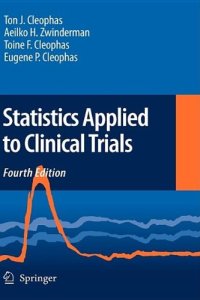
Ebook: Statistics Applied to Clinical Trials
In 1948, the first randomized controlled trial was published by the English Medical Research Council in the "British Medical Journal". Until then, observations had been uncontrolled. Initially, trials frequently did not confirm hypotheses to be tested. This phenomenon was attributed to little sensitivity due to small samples, as well as inappropriate hypotheses based on biased prior trials. Additional flaws were being recognized and subsequently better accounted for. Such flaws of a mainly technical nature have been largely implemented and after 1970 led to trials being of significantly better quality than before. The past decade focused, in addition to technical aspects, on the need for circumspection in the planning and conducting of clinical trials. As a consequence, prior to approval, clinical trial protocols are now routinely scrutinized by different circumstantial organs, including ethics committees, institutional and federal review boards, national and international scientific organizations, and monitoring committees charged with conducting interim analyses. This third edition not only explains classical statistical analyses of clinical trials, but addresses relatively novel issues, including equivalence testing, interim analyses, sequential analyses, meta-analyses, and provides a framework of the best statistical methods currently available for such purposes.
Download the book Statistics Applied to Clinical Trials for free or read online
Continue reading on any device:

Last viewed books
Related books
{related-news}
Comments (0)